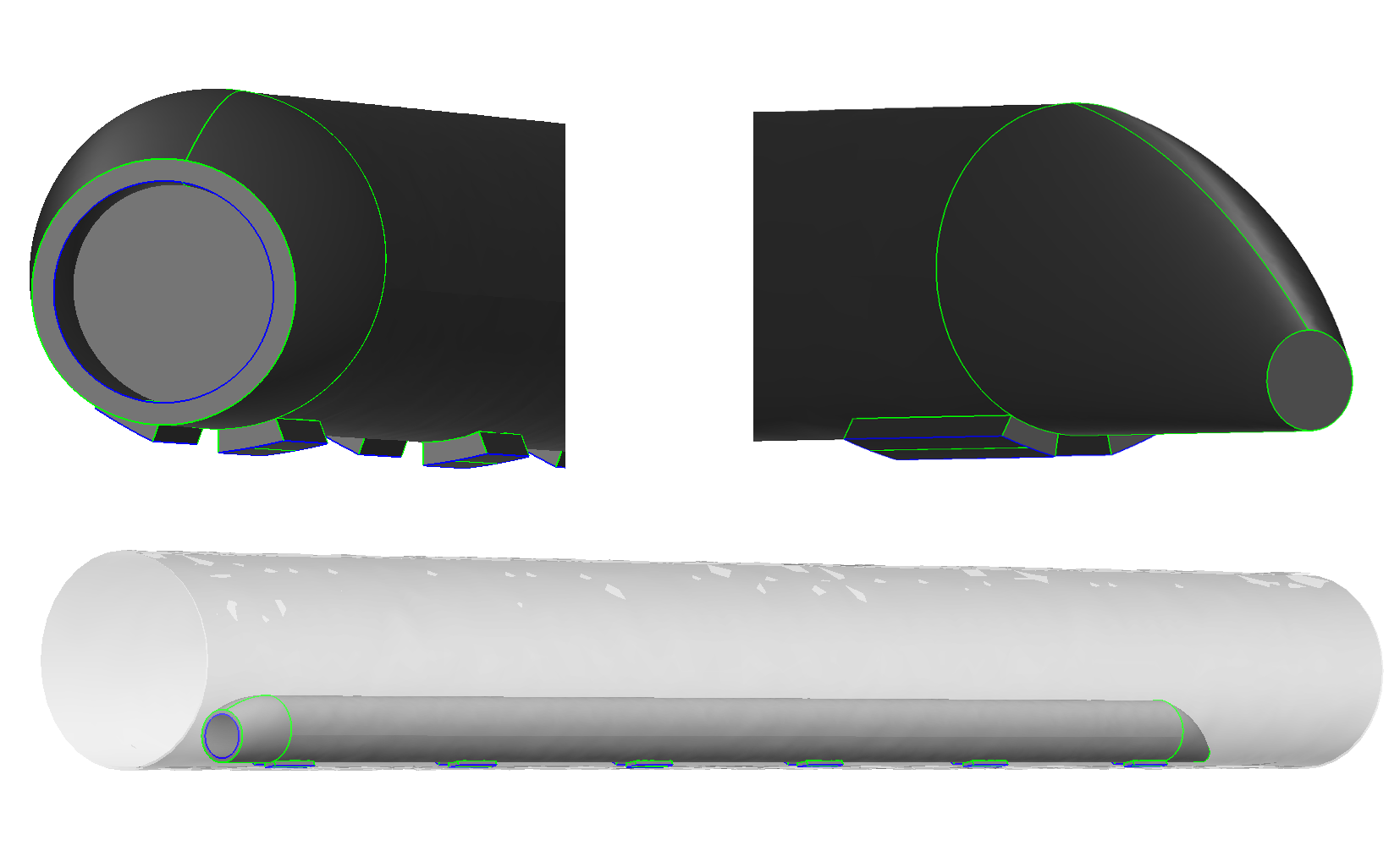Introduction¶
This is the documentation for a hyperloop optimization framework, which can be found in this github repository.
The hyperloop concept is a proposed transportation system that could offer lower costs and travel times relative to California’s current high speed rail project. The design consists of a passenger pod traveling in a tube under light vacuum at near sonic speeds. Propulsion is provided via linear accelerators mounted on the tube itself and the pod rides on a set of air bearings. The speed of the capsule is limited by the ability of air to escape around the outside of the vehicle, therefore a compression system is used to draw air through the vehicle. Compressing the air allows the capsule to reach higher speeds and also provides the air bearings with the necessary pressure. Many of these different sub-systems interact with each other and an effective hyperloop system will need to balance multiple trade-offs.

Calculated baseline hyperloop dimensions for a capsule speed of Mach 0.8, rendered in OpenCSM a parametric solid modeler.
We propose the design of the hyperloop should be taken from a systems perspective with the dual objectives of minimizing ticket cost and minimizing travel time. In order to achieve this goal we propose a top down design approach where the designs of all components are optimized simultaneously with respect to the overall system goals.
An overarching framework is needed to orchestrate the interaction between models of various subsystems and perform the necessary optimization. This code base contains a hyperloop system model built by a handful of engineers and computer scientists as an OpenMDAO. plugin. The intention is to provide this code as a baseline for further public contribution to support an open source hyperloop design. Interested parties should feel free to modify the code as they see fit and improve the models in areas where they have expertise.
Contents¶
The hyperloop github repository and installation instructions can be found here: https://github.com/OpenMDAO-Plugins/Hyperloop.
The original hyperloop proposal can be found here: Hyperloop-Alpha.